Opinion & Analysis
Dear announcers: Stop saying “topspin”
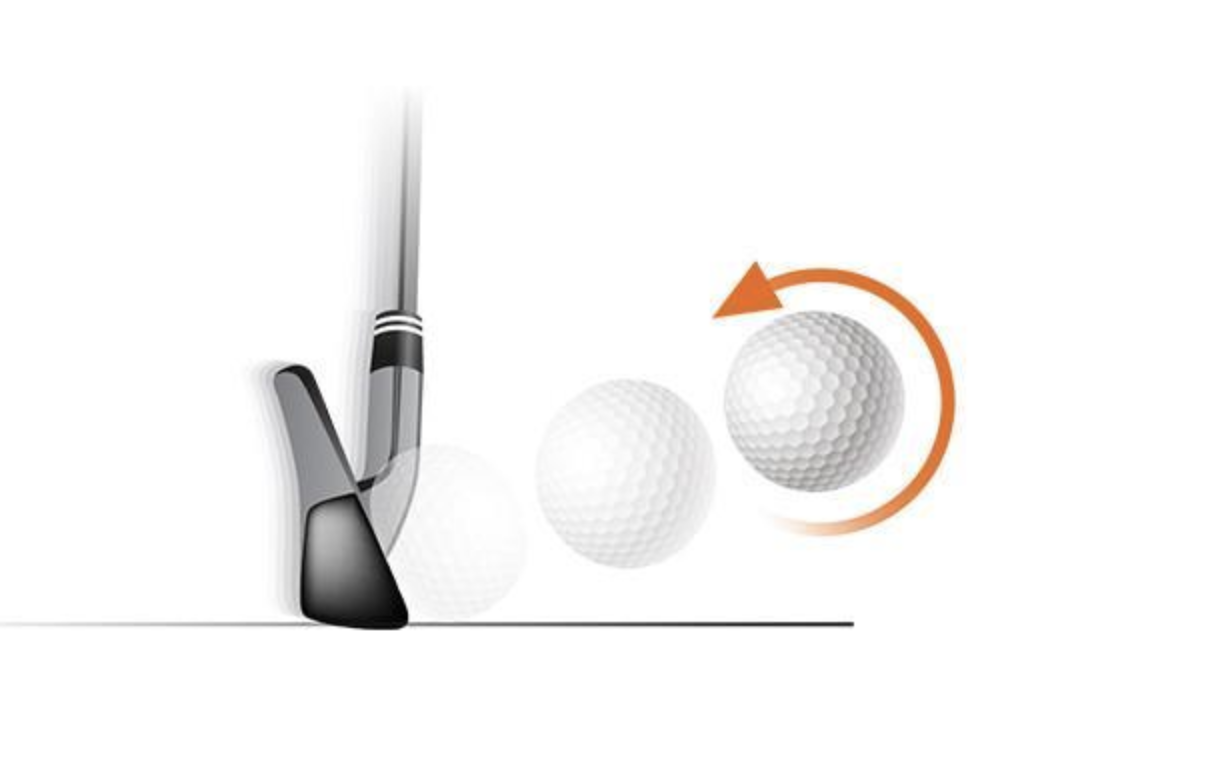
If there is one thing that grinds my gears, it’s when television announcers at the highest level in golf, with the largest audiences, get things so terribly wrong about the physics of the game. It may seem like a small issue, but the problem is these pieces of false information get into the minds of golfers, which then continues to perpetuate misinformation around the game, club fitting, and what actually happens when a golf ball is in motion.
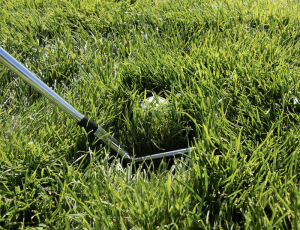
The most recent account was during the first round of the U.S. Open when after a shot was hit from the rough and took off low with very little spin a not-to-be-named announcer said something along the lines of
“That really took off with some topspin, look at it roll out”
This, from a physics perspective, is impossible. So I did what many commentators of the game do, I took to Twitter (@RDSBarath) to state my displeasure for the comment and share the truth about what really happens when a golf club strikes a ball.
The truth
Now that we have pointed out the falsehood, let’s help you better understand what’s really going on. In the golf vernacular, there are a number of ways spin is improperly described, with the two most common being; “sidespin” and “topspin.”
What is sidespin
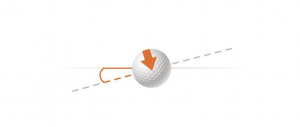
Spin Axis – Trackman Golf
Sidespin is a commonly used incorrect way to describe the spin axis of a golf ball as it travels through the air. Rather than try and define it myself I will refer to the experts at Trackman to help me explain what’s really going on.
“Spin Axis is the tilt angle relative to the horizon of the golf ball’s resulting rotational axis immediately after separation from the club face (post impact).”
“The spin axis can be associated to the wings of an airplane. If the wings of an airplane are parallel to the ground, this would represent a zero spin axis and the plane would fly straight. If the wings were banked/tilted to the left (right wing higher than left wing), this would represent a negative spin axis and the plane would bank/curve to the left. And the opposite holds true if the wings are banked/tilted to the right.”
To better understand just how important spin axis is it to hitting shots that land close to your intended target check out the video below which demonstrates both spin axis and launch direction.
The falsehoods of “topspin”
As mentioned off the top, no pun intended, any shot struck under normal circumstances will not have topspin. The only scenario where is it possible is when a shot is topped into the ground with the leading edge or sole of the club above the equator of the ball.
The idea of topspin originates in paddle sports like tennis and ping pong where is it entirely possible to hit a low flying topspinning shot that hits their respective courts or tables and proceed to almost pick up speed.
The difference between a racket/paddle and a golf club, is a golf club delivers loft at impact, and the center of gravity is away from the contact point of the face. A golf ball even when hit in extremely low friction will still leave the clubface after impact with some amount of backspin, even on a putt.
The below video shows a putt starting to roll forward almost immediately, but what is really happening is the ball is struck under almost perfect putting launch conditions will very low backspin (but still measurable), friction from the ground resists the movement of the ball and the ball goes from skidding to forward roll very quickly.
In the case of the announcer who misspoke, it would have been much more beneficial to the viewer to have explained the shot like
“based on the lie and circumstances of the impact that shot came out a lot lower than it normally would with very little spin, and ran out more than usual”
It’s a major change to the original statement and accurately describes what actually happened when the ball was hit from U.S. Open rough.
Remember, just because it was said on TV by a former professional golfer doesn’t make it true.
- LIKE74
- LEGIT17
- WOW1
- LOL5
- IDHT1
- FLOP7
- OB5
- SHANK17
19th Hole
Vincenzi’s 2024 Zurich Classic of New Orleans betting preview

The PGA TOUR heads to New Orleans to play the 2023 Zurich Classic of New Orleans. In a welcome change from the usual stroke play, the Zurich Classic is a team event. On Thursday and Saturday, the teams play best ball, and on Friday and Sunday the teams play alternate shot.
TPC Louisiana is a par 72 that measures 7,425 yards. The course features some short par 4s and plenty of water and bunkers, which makes for a lot of exciting risk/reward scenarios for competitors. Pete Dye designed the course in 2004 specifically for the Zurich Classic, although the event didn’t make its debut until 2007 because of Hurricane Katrina.
Coming off of the Masters and a signature event in consecutive weeks, the field this week is a step down, and understandably so. Many of the world’s top players will be using this time to rest after a busy stretch.
However, there are some interesting teams this season with some stars making surprise appearances in the team event. Some notable teams include Patrick Cantlay and Xander Schauffele, Rory McIlroy and Shane Lowry, Collin Morikawa and Kurt Kitayama, Will Zalatoris and Sahith Theegala as well as a few Canadian teams, Nick Taylor and Adam Hadwin and Taylor Pendrith and Corey Conners.
Past Winners at TPC Louisiana
- 2023: Riley/Hardy (-30)
- 2022: Cantlay/Schauffele (-29)
- 2021: Leishman/Smith (-20)
- 2019: Palmer/Rahm (-26)
- 2018: Horschel/Piercy (-22)
- 2017: Blixt/Smith (-27)
2024 Zurich Classic of New Orleans Picks
Tom Hoge/Maverick McNealy +2500 (DraftKings)
Tom Hoge is coming off of a solid T18 finish at the RBC Heritage and finished T13 at last year’s Zurich Classic alongside Harris English.
This season, Hoge is having one of his best years on Tour in terms of Strokes Gained: Approach. In his last 24 rounds, the only player to top him on the category is Scottie Scheffler. Hoge has been solid on Pete Dye designs, ranking 28th in the field over his past 36 rounds.
McNealy is also having a solid season. He’s finished T6 at the Waste Management Phoenix Open and T9 at the PLAYERS Championship. He recently started working with world renowned swing coach, Butch Harmon, and its seemingly paid dividends in 2024.
Keith Mitchell/Joel Dahmen +4000 (DraftKings)
Keith Mitchell is having a fantastic season, finishing in the top-20 of five of his past seven starts on Tour. Most recently, Mitchell finished T14 at the Valero Texas Open and gained a whopping 6.0 strokes off the tee. He finished 6th at last year’s Zurich Classic.
Joel Dahmen is having a resurgent year and has been dialed in with his irons. He also has a T11 finish at the PLAYERS Championship at TPC Sawgrass which is another Pete Dye track. With Mitchell’s length and Dahmen’s ability to put it close with his short irons, the Mitchell/Dahmen combination will be dangerous this week.
Taylor Moore/Matt NeSmith +6500 (DraftKings)
Taylor Moore has quickly developed into one of the more consistent players on Tour. He’s finished in the top-20 in three of his past four starts, including a very impressive showing at The Masters, finishing T20. He’s also finished T4 at this event in consecutive seasons alongside Matt NeSmith.
NeSmith isn’t having a great 2024, but has seemed to elevate his game in this format. He finished T26 at Pete Dye’s TPC Sawgrass, which gives the 30-year-old something to build off of. NeSmith is also a great putter on Bermudagrass, which could help elevate Moore’s ball striking prowess.
- LIKE7
- LEGIT3
- WOW1
- LOL1
- IDHT0
- FLOP3
- OB1
- SHANK1
19th Hole
Vincenzi’s 2024 LIV Adelaide betting preview: Cam Smith ready for big week down under

After having four of the top twelve players on the leaderboard at The Masters, LIV Golf is set for their fifth event of the season: LIV Adelaide.
For both LIV fans and golf fans in Australia, LIV Adelaide is one of the most anticipated events of the year. With 35,000 people expected to attend each day of the tournament, the Grange Golf Club will be crawling with fans who are passionate about the sport of golf. The 12th hole, better known as “the watering hole”, is sure to have the rowdiest of the fans cheering after a long day of drinking some Leishman Lager.
The Grange Golf Club is a par-72 that measures 6,946 yards. The course features minimal resistance, as golfers went extremely low last season. In 2023, Talor Gooch shot consecutive rounds of 62 on Thursday and Friday, giving himself a gigantic cushion heading into championship Sunday. Things got tight for a while, but in the end, the Oklahoma State product was able to hold off The Crushers’ Anirban Lahiri for a three-shot victory.
The Four Aces won the team competition with the Range Goats finishing second.
*All Images Courtesy of LIV Golf*
Past Winners at LIV Adelaide
- 2023: Talor Gooch (-19)
Stat Leaders Through LIV Miami
Green in Regulation
- Richard Bland
- Jon Rahm
- Paul Casey
Fairways Hit
- Abraham Ancer
- Graeme McDowell
- Henrik Stenson
Driving Distance
- Bryson DeChambeau
- Joaquin Niemann
- Dean Burmester
Putting
- Cameron Smith
- Louis Oosthuizen
- Matt Jones
2024 LIV Adelaide Picks
Cameron Smith +1400 (DraftKings)
When I pulled up the odds for LIV Adelaide, I was more than a little surprised to see multiple golfers listed ahead of Cameron Smith on the betting board. A few starts ago, Cam finished runner-up at LIV Hong Kong, which is a golf course that absolutely suits his eye. Augusta National in another course that Smith could roll out of bed and finish in the top-ten at, and he did so two weeks ago at The Masters, finishing T6.
At Augusta, he gained strokes on the field on approach, off the tee (slightly), and of course, around the green and putting. Smith able to get in the mix at a major championship despite coming into the week feeling under the weather tells me that his game is once again rounding into form.
The Grange Golf Club is another course that undoubtedly suits the Australian. Smith is obviously incredibly comfortable playing in front of the Aussie faithful and has won three Australian PGA Championship’s. The course is very short and will allow Smith to play conservative off the tee, mitigating his most glaring weakness. With birdies available all over the golf course, there’s a chance the event turns into a putting contest, and there’s no one on the planet I’d rather have in one of those than Cam Smith.

Louis Oosthuizen +2200 (DraftKings)
Louis Oosthuizen has simply been one of the best players on LIV in the 2024 seas0n. The South African has finished in the top-10 on the LIV leaderboard in three of his five starts, with his best coming in Jeddah, where he finished T2. Perhaps more impressively, Oosthuizen finished T7 at LIV Miami, which took place at Doral’s “Blue Monster”, an absolutely massive golf course. Given that Louis is on the shorter side in terms of distance off the tee, his ability to play well in Miami shows how dialed he is with the irons this season.
In addition to the LIV finishes, Oosthuizen won back-to-back starts on the DP World Tour in December at the Alfred Dunhill Championship and the Mauritus Open. He also finished runner-up at the end of February in the International Series Oman. The 41-year-old has been one of the most consistent performers of 2024, regardless of tour.
For the season, Louis ranks 4th on LIV in birdies made, T9 in fairways hit and first in putting. He ranks 32nd in driving distance, but that won’t be an issue at this short course. Last season, he finished T11 at the event, but was in decent position going into the final round but fell back after shooting 70 while the rest of the field went low. This season, Oosthuizen comes into the event in peak form, and the course should be a perfect fit for his smooth swing and hot putter this week.

- LIKE12
- LEGIT3
- WOW0
- LOL1
- IDHT0
- FLOP1
- OB1
- SHANK1
Opinion & Analysis
The Wedge Guy: What really makes a wedge work? Part 1

Of all the clubs in our bags, wedges are almost always the simplest in construction and, therefore, the easiest to analyze what might make one work differently from another if you know what to look for.
Wedges are a lot less mysterious than drivers, of course, as the major brands are working with a lot of “pixie dust” inside these modern marvels. That’s carrying over more to irons now, with so many new models featuring internal multi-material technologies, and almost all of them having a “badge” or insert in the back to allow more complex graphics while hiding the actual distribution of mass.
But when it comes to wedges, most on the market today are still single pieces of molded steel, either cast or forged into that shape. So, if you look closely at where the mass is distributed, it’s pretty clear how that wedge is going to perform.
To start, because of their wider soles, the majority of the mass of almost any wedge is along the bottom third of the clubhead. So, the best wedge shots are always those hit between the 2nd and 5th grooves so that more mass is directly behind that impact. Elite tour professionals practice incessantly to learn to do that consistently, wearing out a spot about the size of a penny right there. If impact moves higher than that, the face is dramatically thinner, so smash factor is compromised significantly, which reduces the overall distance the ball will fly.
Every one of us, tour players included, knows that maddening shot that we feel a bit high on the face and it doesn’t go anywhere, it’s not your fault.
If your wedges show a wear pattern the size of a silver dollar, and centered above the 3rd or 4th groove, you are not getting anywhere near the same performance from shot to shot. Robot testing proves impact even two to three grooves higher in the face can cause distance loss of up to 35 to 55 feet with modern ‘tour design’ wedges.
In addition, as impact moves above the center of mass, the golf club principle of gear effect causes the ball to fly higher with less spin. Think of modern drivers for a minute. The “holy grail” of driving is high launch and low spin, and the driver engineers are pulling out all stops to get the mass as low in the clubhead as possible to optimize this combination.
Where is all the mass in your wedges? Low. So, disregarding the higher lofts, wedges “want” to launch the ball high with low spin – exactly the opposite of what good wedge play requires penetrating ball flight with high spin.
While almost all major brand wedges have begun putting a tiny bit more thickness in the top portion of the clubhead, conventional and modern ‘tour design’ wedges perform pretty much like they always have. Elite players learn to hit those crisp, spinny penetrating wedge shots by spending lots of practice time learning to consistently make contact low in the face.
So, what about grooves and face texture?
Grooves on any club can only do so much, and no one has any material advantage here. The USGA tightly defines what we manufacturers can do with grooves and face texture, and modern manufacturing techniques allow all of us to push those limits ever closer. And we all do. End of story.
Then there’s the topic of bounce and grinds, the most complex and confusing part of the wedge formula. Many top brands offer a complex array of sole configurations, all of them admittedly specialized to a particular kind of lie or turf conditions, and/or a particular divot pattern.
But if you don’t play the same turf all the time, and make the same size divot on every swing, how would you ever figure this out?
The only way is to take any wedge you are considering and play it a few rounds, hitting all the shots you face and observing the results. There’s simply no other way.
So, hopefully this will inspire a lively conversation in our comments section, and I’ll chime in to answer any questions you might have.
And next week, I’ll dive into the rest of the wedge formula. Yes, shafts, grips and specifications are essential, too.
- LIKE32
- LEGIT7
- WOW1
- LOL1
- IDHT2
- FLOP3
- OB1
- SHANK3
-

 19th Hole2 weeks ago
19th Hole2 weeks agoDave Portnoy places monstrous outright bet for the 2024 Masters
-

 19th Hole2 weeks ago
19th Hole2 weeks agoTiger Woods arrives at 2024 Masters equipped with a putter that may surprise you
-

 19th Hole2 days ago
19th Hole2 days ago‘Absolutely crazy’ – Major champ lays into Patrick Cantlay over his decision on final hole of RBC Heritage
-

 19th Hole2 days ago
19th Hole2 days agoJustin Thomas on the equipment choice of Scottie Scheffler that he thinks is ‘weird’
-

 19th Hole3 weeks ago
19th Hole3 weeks agoReport: Tiger Woods has ‘eliminated sex’ in preparation for the 2024 Masters
-

 19th Hole1 week ago
19th Hole1 week agoTwo star names reportedly blanked Jon Rahm all week at the Masters
-

 19th Hole1 week ago
19th Hole1 week agoReport: LIV Golf identifies latest star name they hope to sign to breakaway tour
-

 19th Hole1 week ago
19th Hole1 week agoNeal Shipley presser ends in awkward fashion after reporter claims Tiger handed him note on 8th fairway

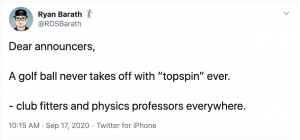






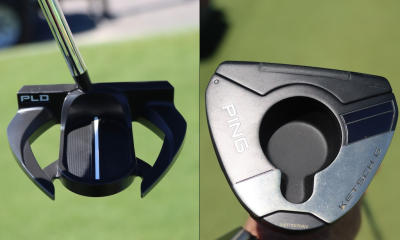















Howard Clark
Sep 21, 2020 at 6:55 am
Good ball striker means not very bright, sort of like “less people are in the stands”, when you meant fewer. And my favorite, Bryson was a physics major. He dropped out of college.
Evan
Sep 21, 2020 at 4:50 am
What grinds my gears Ryan? People who get upset about the use of the term side spin to describe a ball curving in flight.
chip75
Sep 20, 2020 at 11:54 am
“Less spin and more roll…” would be more apt.
Stephan Lechner
Sep 20, 2020 at 10:56 am
The comment the announcers make that I find most annoying is such an such player is a really good ball striker. They will go out of their way to say it multiple times about multiple players throughout the coverage. Isn’t it obvious they are all good ball strikers? They wouldn’t be on the PGA Tour if they weren’t good ball strikers. They will say he is one of the best ball strikers in the game. No kidding!
Wyatt Scott
Sep 21, 2020 at 12:29 am
they have to justify their existence , unfortunately with loads of horseshoe
Steve Diver
Sep 19, 2020 at 2:57 pm
Wait, you freely admit that you can hit a putt with topspin. Regardless of how it achieved the topspin, fact is its there.
What about a teed ball with very low launch angle, inside up strike such as a draw drive. Does the ball ever achieve top spin, either in the air or upon contact with the ground?
iceman
Sep 18, 2020 at 8:27 pm
You could simplify your correct statment to “look how little the ball spun leaving the rough” as that will be easier for the audience to take. Too much information will cause you to lose the audience. Physic explanations were on point.
Shallowface
Sep 18, 2020 at 8:12 pm
Golf balls don’t roll up clubfaces when struck either, but we hear that all the time despite high speed visual evidence to the contrary.
Bob Jones
Sep 22, 2020 at 12:37 pm
There’s a Lee Trevino video on YouTube where he says just is what happens. Ignorance is bliss, I guess.
You don’t even need video evidence. Just explain how if the ball is running up the face what force stops it before it flies off the clubface away from the target, what force turns it around, what force starts moving it in the proper direction, and what force imparts the speed needed to send the ball from there to who knows how far down the fairway. Go ahead. Explain that one.
Rwj
Sep 18, 2020 at 7:42 pm
Plenty of things the announcers are doing is annoying:
Feherty dry mouth
Roberts essays
Montages
Constant replays of earlier action
The complete lack of showing golf shots…
But not topspin
Doug
Sep 18, 2020 at 3:58 pm
Just because Barath correctly points out what’s really happening doesn’t make it petty.
And a golf ball can’t have both backspin and sidespin; that is, it can have only one spin axis, which may or may not be tilted.
Some of us don’t like to have everything “dumbed down” to appease those who need “simple easy-to-understand language”.
Nack Jicklaus
Sep 18, 2020 at 2:24 pm
Topspin is for ping pong.
Mark
Sep 18, 2020 at 12:37 pm
I think this opinion piece is annoyingly petty. It really doesn’t matter if they say side spin or top spin and whether or not that’s exactly what is happening. We all know exactly what they mean when they say these things. It is simple easy-to-understand language, unlike the pedantic alternative you suggested.
I especially take issue with the “side spin” police.
“There’s no such thing as side spin, the spin axis is tilted!!!” they cry. But how is it tilted? To the side. And what happens when the spin axis is tilted to one side? The ball spins more to the side in proportion to the degree to which the spin axis is tilted to that side.
Side spin seems to be a pretty good, simple description of what is actually taking place. I’ll give you topspin, it is an exceedingly rare golf shot at least as measured off the face. The term could be easily switched to low spin or minimal spin.
But even so, at some point in a low, running shot, even when hit with significant backspin, the ball, like your putt example, quits resisting physics and starts rolling forward, correct?
Wyatt Scott
Sep 21, 2020 at 12:33 am
okay Simple Simon, likely a Boomer to boot
Inya Mouf
Sep 18, 2020 at 11:18 am
Dear GolfWRX hackers, stop saying flop shot. Every shot around the green with an open face is not a flop shot.